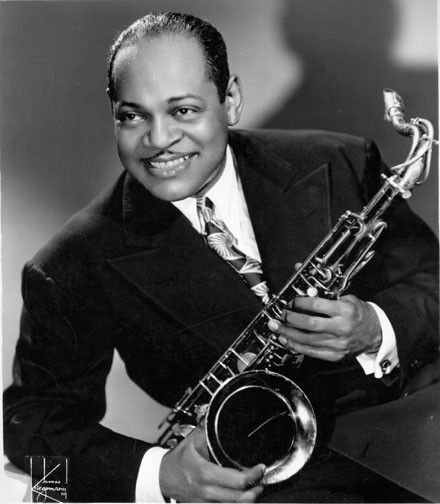Coleman Randolph Hawkins was born November 21, 1904, in Saint Joseph, Missouri. He began his musical education early with lessons on both the piano and cello. Despite parental encouragement towards more classic instruments, Hawkins focused on the saxophone after he received a “C melody” tenor saxophone for his ninth birthday. This gift was the start of a career that established Hawkins as a premier jazz saxophonist.
By age twelve, Coleman was already being asked to play his sax at school dances and local events. At seventeen, Hawkins became a professional musician when he joined pianist Jesse Stone’s group, the Blues Serenaders, to play tenor sax in 1921. Two years later, he joined Mamie Smith’s Jazz Hound but quickly left to freelance with musical groups in the New York area. It was during one of these engagements in 1923, where band leader Fletcher Henderson took note of Hawkins and asked him to join his band.
Hawkins remained with Henderson for eleven years, building a reputation as a stellar performer. He joined Jack Hylton’s Orchestra in 1934 and soon traveled through Europe for the next five years. Hawkins returned from Europe in 1939, started his own band and recorded “Body and Soul,” his signature song. This improvisational masterpiece was an immediate commercial success and turned millions of listeners into jazz fans.
The success of “Body and Soul” encouraged Hawkins to start his own orchestra in 1940. He quickly disbanded it when management became an issue. By 1941, Hawkins returned to working with smaller musical groups. For the next twenty-five years, Hawkins performed with jazz legends such as Thelonious Monk, Dizzy Gillespie, and Duke Ellington. Despite his commercial success and popularity, Hawkins battled with alcoholism for much of his life. His health declined dramatically in 1967, and he died in 1969 from liver disease.

